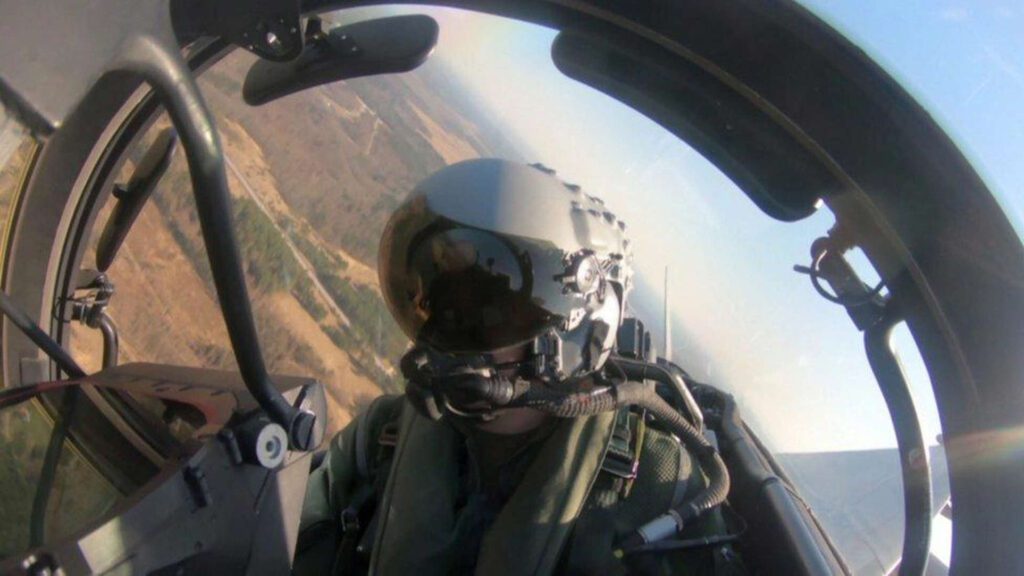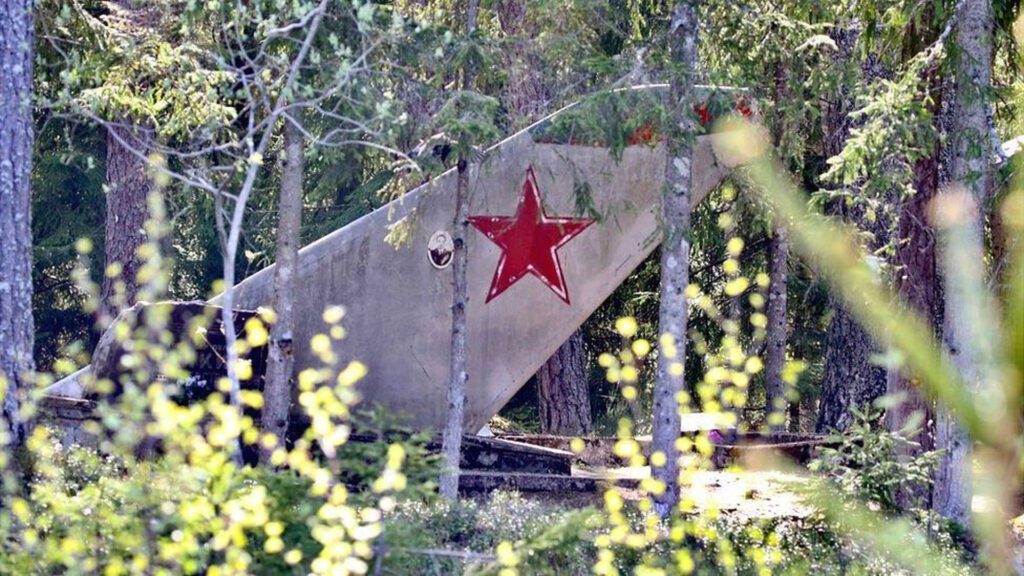(BBC) In a cramped room located in a building near the runway of the Amari air base in Estonia, a TV shows old episodes of the American series Friends.
Feet on the table, coffee mugs in hand, a little casual banter. On the TV screen, the character Rachel has just returned from the hairdresser, Ross is upset about something. Then an airman appears through the door and calmly announces, “Zombie heading north out of Kaliningrad.”
Immediately, everyone there is on their feet and moving into the operations room next door, where digital screens and maps marked “NATO Secret (North Atlantic Treaty Organization, Western military alliance)” flash amidst the torrent of incoming data.
This is the Quick Reaction Force for Operation Azotize, the NATO Baltic Air Policing mission that watches over the military alliance’s northeastern border, whose boundaries are regularly tested by Russian aircraft.
Since April, the British Air Force’s (RAF) 9th Typhoon fighter squadron has taken over leadership of the mission then commanded by Germany’s Richthofen Squadron.
The large-scale invasion of Ukraine by Russia has forced NATO to focus its efforts on securing its eastern borders. The goal is simple: prevent Russia from invading anywhere else, specifically a NATO country such as one of the three Baltic states (Estonia, Latvia, and Lithuania) or Poland.
“Zombie” is code for a Russian aircraft acting suspiciously.
“It could be three things,” explains Flight Commander Scott Maccoll of RAF Lossiemouth in Scotland. “Either he hasn’t submitted a flight plan, or they’re not squawking [communicating] or they’re just not responding to Air Traffic Control. Sometimes it’s all three.”

In this case, it turned out to be a false alarm, as the “zombie” turned north and moved away from the NATO borders.
The Amari airbase in Estonia, where the Typhoon fighters are stationed, used to house the Soviet Air Force during the Cold War, and in the nearby forest there is still a cemetery where Soviet pilots are buried with the horizontal stabilizers of their old MiG-15s and MiG-17s.
Today, the mission of these NATO pilots is complicated and unforgiving.
With Finland now joining NATO, the Baltic Sea is bordered by seven members of the Western alliance, soon to be eight when the way is open for Sweden to join.
But Russia still has two strategic footholds there: St. Petersburg, Russia’s second largest city, to the east, and its Kaliningrad enclave, the former Prussian city of Konigsberg and its hinterland, a place now teeming with missiles and other military equipment.
Russian Su-27 Flanker fighters, Airborne Command and Control aircraft, and cargo planes fly continuously up and down the Baltic between these two bases and beyond, keeping NATO air forces constantly on alert.
“So we can be sitting there, feet up on the table, having a cup of coffee, and the next minute the alarm goes off,” says one of the younger Typhoon pilots, who asked not to be identified.
“We react to any alarm as if it were real. So we run to the aircraft, put on our kit, start the engines, buckle up, talk to the [Control] Tower and Operations on the radios, get our clearance, and then taxi and take off as fast as we can.”
Inside the hangars, another pilot approaches one of the Typhoons. They are armed and “on standby” if needed.
Flight Commander Rich Leask points to a long, sleek missile attached to the side of the fuselage.

“This is the Meteor,” he says. “It’s been in operational service since 2018. In the front it has its own active search radar, in the rear it has its own propulsion with a Ramjet (a type of jet engine that has no moving parts).”
Other smaller missiles, designed for short-range air combat, remain positioned menacingly on the wingtips.
So what really happens when pilots approach these Russian “zombies”? Presumably, no one wants to start losing missiles and start World War III?
“Our role here is to protect NATO airspace,” Maccoll replies, adding enigmatically that “our Rules of Engagement are classified.”
Another pilot is a bit more precise. “We don’t know which aircraft we’re going to intercept. So we stop next to it, identify the aircraft and then we get more information, more mission sets from the Operations Center and respond to what they tell us to do.”
What I do know is that these RAF pilots take lots of pictures of the zombies, good pictures too, as they approach and escort them through NATO airspace.

“We conducted eight interception missions,” says Maccoll. “All were against Russian aircraft…. We’ve been doing air policing of the Baltic for several years, but there’s no doubt that Russia’s illegal invasion of Ukraine last year changed the dynamics here.”
That dynamic has also changed on the ground, where there is a new urgency to deploy sufficient ground forces to prevent any future Russian incursion.
Estonian Prime Minister Kaja Kallas, who grew up during the Soviet Union, tells me she has no doubt that if Russian President Vladimir Putin’s invasion of Ukraine was successful, it would only be a matter of time before he turned his attention to the Baltic states.
As part of NATO’s policy of “enhanced forward presence” in these countries and Poland, there is a British-led multinational battle group based in Tapa in northern Estonia.
Challenger 2 main battle tanks, multiple launch rocket systems, Wildcat and Apache helicopters and even a French Foreign Legion are aimed at deterring any movement by Moscow.
“The challenge for NATO here in the Baltics,” says Brigadier Giles Harris, who commands Operation Cabrit, Britain’s contribution in Estonia, “is to deter Russia without escalating (the conflict).”
The numbers, however, are minuscule compared to the vast forces Russia can muster across the border in normal times.
There was a reluctant admission that the NATO deterrent force in Estonia would essentially act as a “detonator,” triggering rapid reinforcement as Russian forces advanced westward.
Does NATO have enough forces?
“The Battle Groups [in the Baltics] should be a sufficient deterrent,” says Brigadier Harris. “If that fails, then we are finished.”
“If Russia invades, then we will go east and fight them.”
